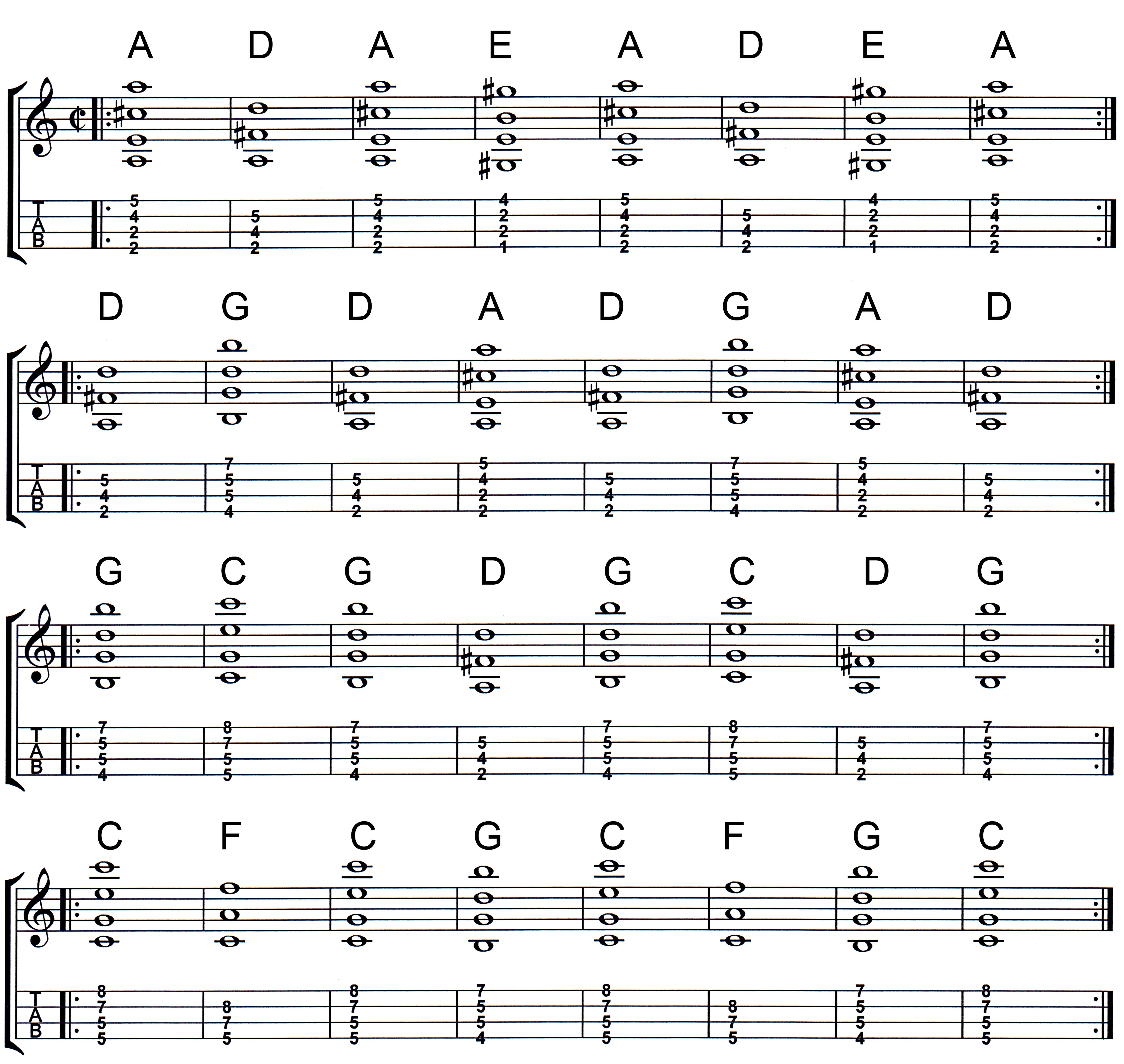
In learning to play chords, and moving around the fret board efficiently in doing so, simple exercises are often a great way to learn to play them and move between them. And, hopefully, you learn a few new chords or chord locations in the process.
In this lesson we have set out a series of four exercises in four keys: A, D, G, and C. Each follows a set pattern - the same for all four exercises. Here is the pattern:
Play through each pattern separately and learn to move between the chords of each pattern smoothly and in time, which means that once you have it reasonably comfortable you want to put it to a metronome, starting at about 60 beats per minute.
Do not increase the tempo until you are able to execute each exercise smoothly and cleanly (fretting all notes well).
Take your time. There is no rush here. You want to learn this right the firs time!
Okay, here you go.
I - IV - I - V - I - IV - V - I

These are not difficult chords to play, but getting each chord, every note of each chord, to sound out clean and clear in a consistent fashion will take a little practice. You will be building strength as well, which increases your stamina. That is a good thing.
Now, once you have gone over each of these exercises, what I want you to do is go back over the previous lessons and play the rhythm parts of the songs which you learned previously. You did learn the rhythm parts, too, right?
Okay, even if you didn't, now is the time to do so. So, if you never did learn the rhythm parts, go over them with the chord shapes you know first. Then, begin to use these new chord shapes and positions to play the rhythm parts of the songs. You may have noticed there are no open strings in the voicings of these new versions. And that is the point.
When you fret all the notes of a chord, with no open strings, you have more control over how they sound. Fretted notes have a more consistent sound across the chord. Chords with open strings tend to sound brighter, yes, but you also have notes - the fretted notes of the chord - which are not as bright sounding. So, when you remove open string notes and replace them with fretted alternatives, as in the chords of this lesson, you now have a more even sounding chord, sonically. This helps make the rhythm part you play on mandolin sound more cohesive, less obtrusive, not prone to stepping on other instruments' parts. You will blend better with the other instruments - which is exactly what you want.
Yes, open chords, chords with open strings, have their place, of course. But when playing with a group, you want more control over your sound so you will blend better, fit in better with the other players' parts. And that is a very good thing.
Now, go start makin' some foot stompin' music!